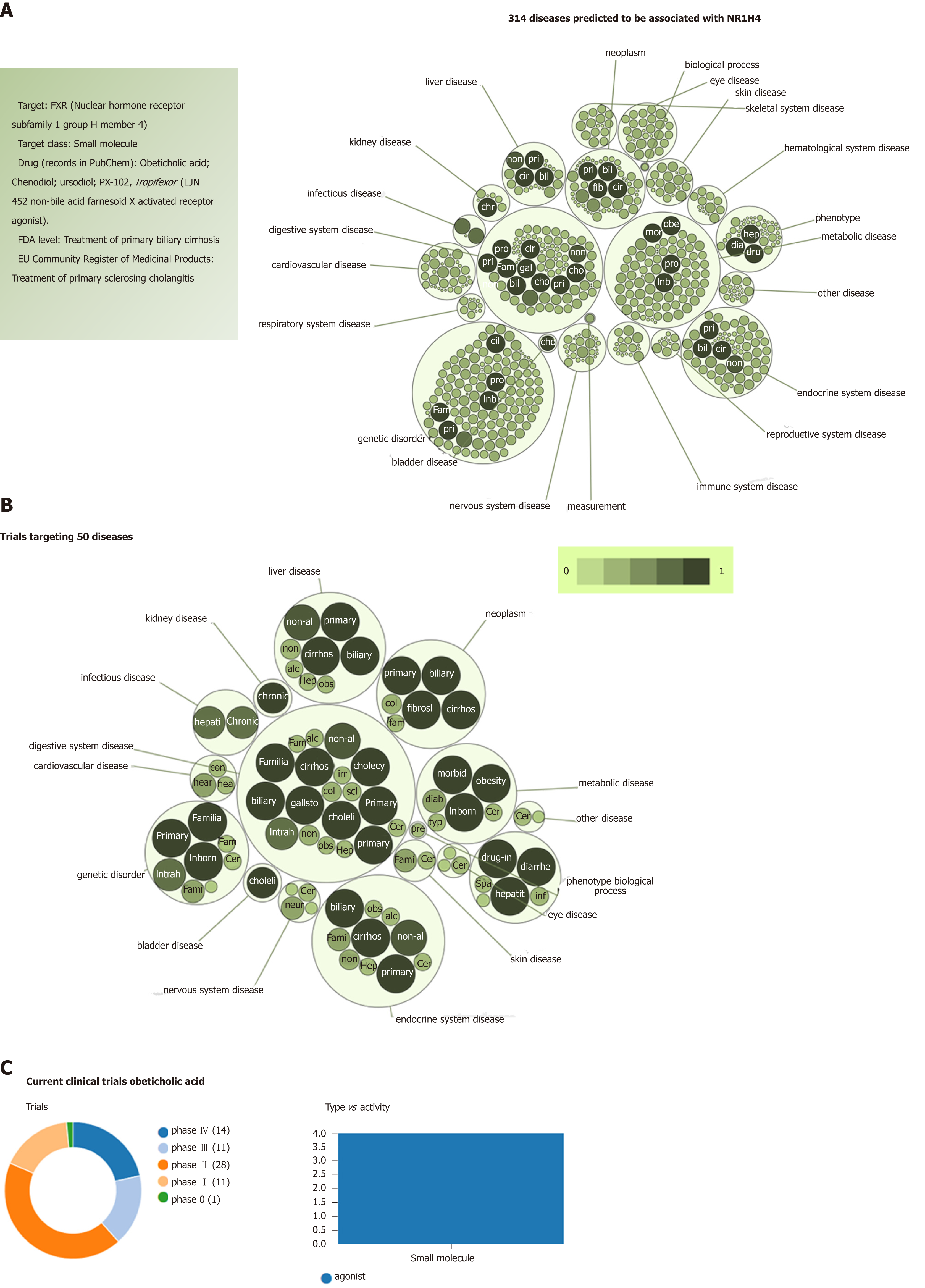Copyright
©The Author(s) 2019.
World J Gastroenterol. Apr 21, 2019; 25(15): 1783-1796
Published online Apr 21, 2019. doi: 10.3748/wjg.v25.i15.1783
Published online Apr 21, 2019. doi: 10.3748/wjg.v25.i15.1783
Figure 4 Farnesoid X nuclear receptor (nuclear hormone receptor subfamily 1 group H member 4): Analysis of pleiotropy.
A: Graph shows all predicted diseases associated with farnesoid X nuclear receptor; B: Clinical trials of drugs that target farnesoid X nuclear receptor. Predictions were explored in The Open Targets Platform that allows prioritisation of drug targets based on the strength of their association with a disease (https://http://http://www.targetvalidation.org/); C: Evidence curated from ClinicalTrials.gov, a database of privately and publicly funded clinical studies conducted around the world. https://clinicaltrials.gov/. Diseases are presented as bubbles grouped into therapeutic areas using their Experimental Factor Ontology relationships. The size and shade of the color of each bubble is proportional to the strength of association between the disease and farnesoid X nuclear receptor. The concept of a target-disease association is based on the analysis of several resources, including genetic associations (GWAS Catalog, UniProt, European Variation Archive, Gene2Phenotype), somatic mutations (Cancer Gene Census, European Variation Archive somatic, IntOGen), RNA expression (expression atlas), drugs (ChEMBL), affected pathways (Reactome), animal models (PhenoDigm) and text mining (Europe PMC). The platform is available at https://http://www.targetvalidation.org. Data last updated December 2018.
- Citation: Sookoian S, Pirola CJ. Repurposing drugs to target nonalcoholic steatohepatitis. World J Gastroenterol 2019; 25(15): 1783-1796
- URL: https://www.wjgnet.com/1007-9327/full/v25/i15/1783.htm
- DOI: https://dx.doi.org/10.3748/wjg.v25.i15.1783









